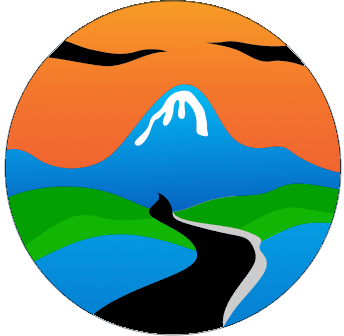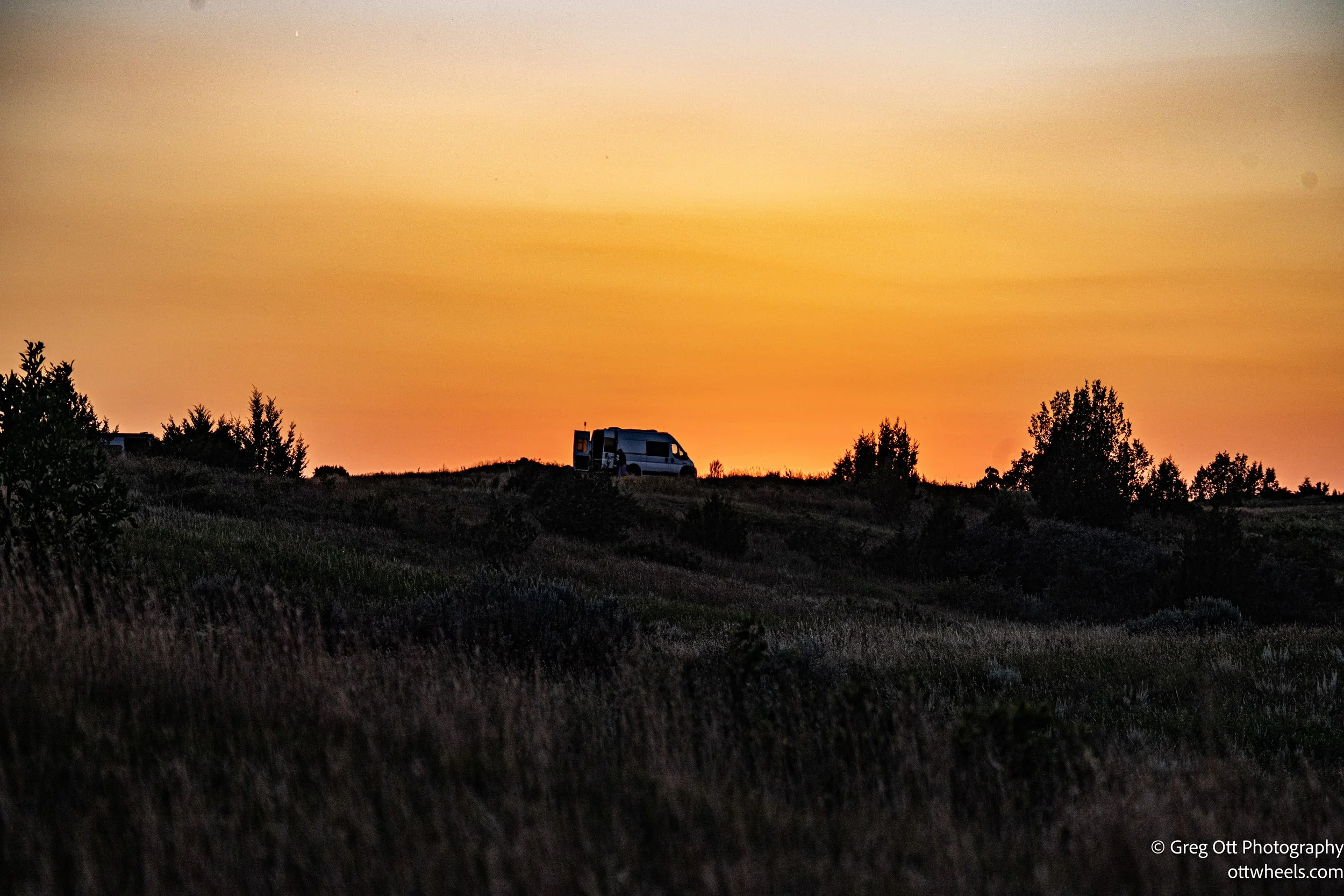Theodore Roosevelt National Park (South Unit)
I enjoyed the quiet of the CCC Campground that morning. With the side door open, I listened to the birds and took my time over breakfast before packing up for the drive south.
My gas was already below my “half-tank refill” point, so I made topping off the priority. Ten miles down the road, I pulled into a busy gas station packed with construction vehicles. While filling up, I scraped a layer of large insects off the windshield and grill—one of the joys of summer driving. Getting back onto the highway wasn’t quick either; trucks clogged the exit, each waiting for a gap in traffic.
Oil is the real engine of this region, bringing in more than $30 billion a year. The scars on the land are obvious, but it’s hard to imagine the area ever walking away from it. As I continued south toward the park, I stopped to photograph fields and roadside scenes, then slowed again at a massive oil processing plant. Trucks were stacked in line, each waiting to dump crude pulled straight from the ground.
I try to avoid interstate highways when I can—it gives me a better feel for the land I’m moving through. Google Maps rewarded me with some long dirt-road detours, and then the park itself was in the middle of paving sections of its entrance road. Construction meant a lead car was guiding traffic. The flagger on my end wasn’t paying attention, so I rolled through, only to be stuck while asphalt trucks lined up. Between the dirt detours and the wait, I lost over half an hour before finally reaching the Visitor Center.
Cosmic Dawn
At the South Unit Visitor Center, I expected the standard orientation film about the park—geology, Roosevelt’s time here, the story of its creation. Instead, the marquee read: Cosmic Dawn: The Untold Story of the James Webb Space Telescope. That sounded intriguing, so I waited the ten minutes for it to start. They even offered bottled water and free popcorn (I passed on the cheese-dusted stuff).
The 90-minute documentary, directed by James Tralie, pulled me deep into the decades-long process of building the Webb telescope. Interviews, archival footage, and visuals showed just how fragile the project was at times. What impressed me most was how personal it felt. Engineers and scientists described the setbacks and triumphs of creating a telescope that had to unfold perfectly a million miles from Earth. Watching that story in a park visitor center felt oddly balanced: outside were landscapes shaped over millions of years, while on the screen was a tool designed to look back billions. Exploration doesn’t only happen on foot—it also happens when we push our gaze further into the universe.
Boondocking in the Grasslands
Before leaving, I asked at the desk about camping and was pointed toward a free boondocking spot in the National Grassland just outside the park. They also gave me tips on gravel biking routes and reminded me of the wildlife rule of thumb: stay at least 100 yards from animals, and definitely don’t try to pet the bison.
The drive to the site was rough. The first stretch of dirt road was smooth enough, but the closer I got to the camping area, the bigger the stones became. It looked intentional—like someone had dumped truckloads of rock to keep the road challenging. I parked, had a late lunch, grabbed a short nap, and headed back toward the park around 3:30. The long entrance line had shrunk from thirty cars to just four, which made re-entry painless.
The Scenic Drive
Map in hand, I set out to do the South Unit’s “big loop,” though with the road closure it was more of an out-and-back. By then it was after five o’clock. The sun was still high and harsh, washing out the colors, but I pulled over where prairie dogs were scattered on both sides of the road. It was my first time seeing them. They were comical and loud, chirping, bouncing, and scolding cars as they passed. I set up my 400mm lens on a tripod but wasn’t thrilled with the results. Photographing prairie dogs is harder than it looks, but they made up for it by being entertaining.
The road soon passed the Cottonwood Campground turnoff (I noted the sign but didn’t drive in) and climbed to a few overlooks. Normally the badlands are full of color, but the glare flattened everything into a pale wash.
Wildlife was quieter than I expected—no bison, no deer, no wild horses. I did stop at Wind Canyon Trail for the view over the Little Missouri River. It was worth the short walk, though I thought the North Unit’s river view was more dramatic.
Farther along, I hit the classic highlights: Boicourt Overlook, which really does give one of the best wide-angle views in the South Unit, and Buck Hill, the park’s highest accessible point with a full 360-degree panorama. I passed Coal Vein Trail but didn’t stop—wasn’t sure what it was about.
Road Closed
Halfway through, I started seeing signs: “Road closed in 14 miles,” then “9 miles,” then “2 miles—difficult turnaround.” Sure enough, the pavement ended, and the road was blocked. Instead of finishing the loop with just 8 miles to go, I had to turn back and drive the same 24 miles in reverse.
By the time I headed back, it was nearing 7 p.m. and the crowds had thinned. The drive felt calmer. I couldn’t help but wonder why the South Unit seemed busier than the North. Maybe the draw is Medora, the small tourist town right outside the entrance. Either way, the evening quiet made the return leg more enjoyable, even if I had to retrace my steps.
I made it back to the Grassland boondocking site just as the sun was dropping. The hills had filled with more vans, people in folding chairs, a few grills going, everyone waiting for the horizon to light up. The prime spot I’d had earlier was already taken, so I pulled into a less ideal space. The view wasn’t quite the same, but in the end it didn’t matter. Sometimes the best part isn’t having the perfect angle—it’s just being there, sharing the moment with strangers who all came for the same reason.













